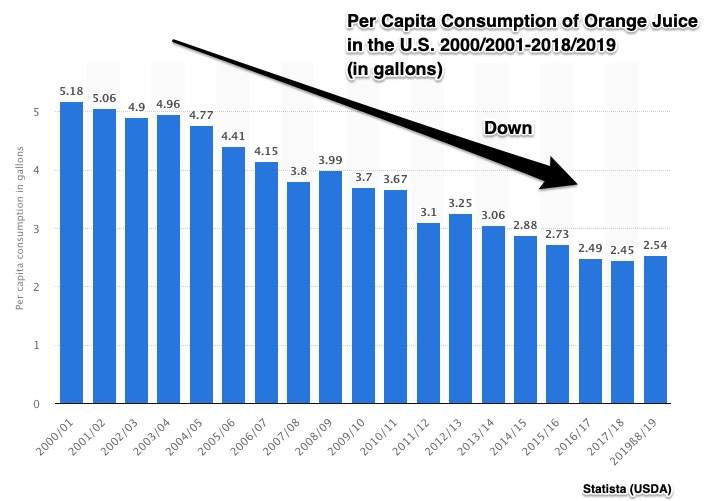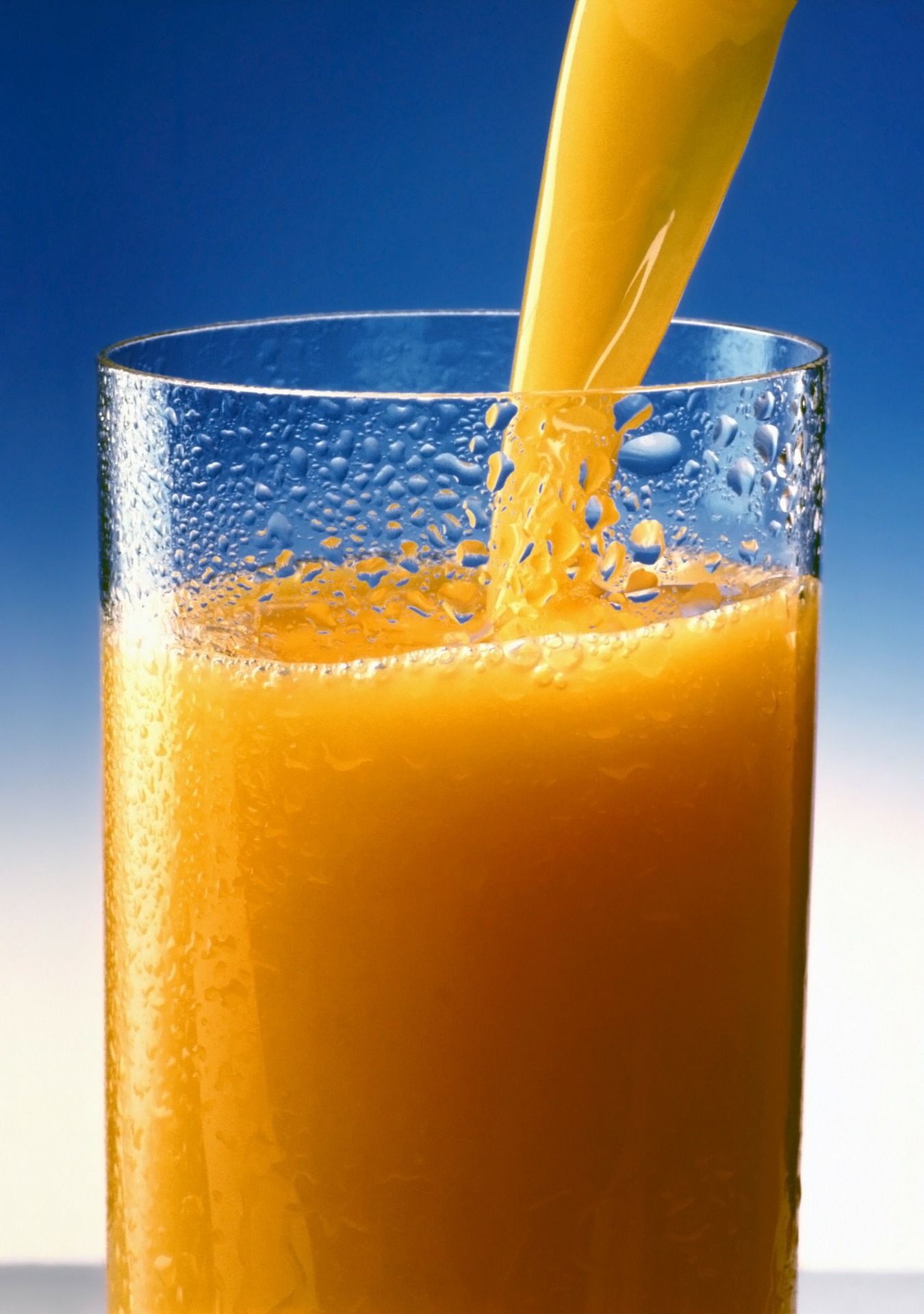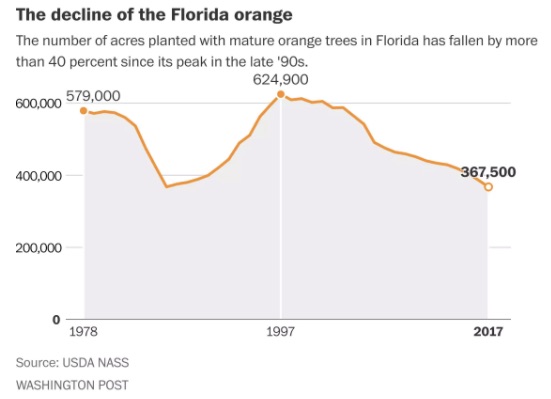We drink a lot of our fruit.
You can see below that the orange tops the juice list:
But the orange could be in trouble.
Florida’s Orange Problems
We are drinking less orange juice. Whereas recent yearly totals are close to 2.5 gallons, they were twice as much two decades ago. In addition (except for me) people eat very few oranges a year–not even three pounds.
You can see, as my arrow indicates, there is a downward slide:
 The Food Institute says that breakfast is one reason. When we skip breakfast or gulp it on the go, we forget our orange juice. According to a Kellogg’s survey (and others like it) with 14,594 participants, only 34 percent ate their morning meal. Also, the orange has lost its glow. People do not believe it is quite as good for you as they once thought.
The Food Institute says that breakfast is one reason. When we skip breakfast or gulp it on the go, we forget our orange juice. According to a Kellogg’s survey (and others like it) with 14,594 participants, only 34 percent ate their morning meal. Also, the orange has lost its glow. People do not believe it is quite as good for you as they once thought.
A 1970s orange juice ad:
The U.S. orange juice supply primarily comes from Florida. Although this year’s orange crop is up by 3 percent to 74 million boxes, growers are worried about a bacterium that is spreading through their orange groves. Called citrus greening or HLB for Huan long bing, the disease stops the fruit from ripening.
The Washington Post tells us that thousands of citrus growers have “dropped out,” leaving “ghost groves” because of the disease. Below, you can see the shrinking acreage:
Our Bottom Line: Power of the Market
The lesson from the orange? Markets create incentives. When demand and supply decline, the incentives nudge people to respond. On the demand side, the remaining growers are asking Florida to allocate more money toward marketing their oranges. As for supply, the goal is to develop disease resistant oranges at local universities.
So yes, although we have a Florida orange juice squeeze from demand and supply, this year’s rebound could reflect a turnaround. No one though expects breakfast to provide the boost.
My sources and more: Thanks to The Washington Post for reminding me of Florida’a citrus problems. From there, the Ledger, Kelloggs, and the Food Institute had more facts. But if you really want to see the numbers, do go to the USDA, here and here.








